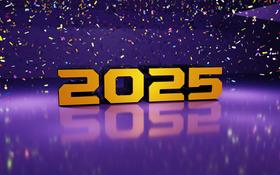For the 2025-26 school year, there are 3 public preschools serving 435 students in West Chicago, IL.
The top ranked public preschool in West Chicago, IL is Pioneer Elementary School. Overall testing rank is based on a school's combined math and reading proficiency test score ranking.
West Chicago, IL public preschools have an average math proficiency score of 17% (versus the Illinois public pre school average of 23%), and reading proficiency score of 12% (versus the 25% statewide average). Pre schools in West Chicago have an average ranking of 2/10, which is in the bottom 50% of Illinois public pre schools.
Minority enrollment is 90% of the student body (majority Hispanic), which is more than the Illinois public preschool average of 58% (majority Hispanic).
Best Public Preschools in West Chicago, IL (2025-26)
School
(Math and Reading Proficiency)
(Math and Reading Proficiency)
Location
Quick Facts
Rank: #11.
Pioneer Elementary School
(Math: 15-19% | Reading: 10-14%)
Rank:
Rank:
4/
Bottom 50%10
615 Kenwood Ave
West Chicago, IL 60185
(630) 293-6040
West Chicago, IL 60185
(630) 293-6040
Gr: PK-5 | 343 students Student-teacher ratio: 11:1 Minority enrollment: 91%
Rank: n/an/a
300 E Forest Ave
West Chicago, IL 60185
(630) 293-6000
West Chicago, IL 60185
(630) 293-6000
Gr: PK | 92 students Student-teacher ratio: 8:1 Minority enrollment: 89%
West Chicago, Illinois Public Schools (Closed)
School
Location
Quick Facts
331 George St
West Chicago, IL 60185
(630) 293-7324
West Chicago, IL 60185
(630) 293-7324
Gr: PK | 72 students Student-teacher ratio: 10:1 Minority enrollment: 88%
Frequently Asked Questions
What are the top ranked public preschools in West Chicago, IL?
The top ranked public preschools in West Chicago, IL include Pioneer Elementary School.
How many public preschools are located in West Chicago?
3 public preschools are located in West Chicago.
What is the racial composition of students in West Chicago?
West Chicago public preschools minority enrollment is 90% of the student body (majority Hispanic), which is more than the Illinois public preschools average of 58% (majority Hispanic).
Recent Articles

Texas Schools Enrollment Trends & Policy in 2025
Latest data and policy changes on Texas public school enrollment growth, funding, and virtual education in 2025.

Financial Aid & Hidden Costs in Public Schools
Learn about financial aid and hidden costs in public schools. Discover what parents should budget for beyond tuition-free education.

NYC Schools Still Most Segregated in 2025
Despite reforms, New York City schools remain the most segregated in the U.S. in 2025. Here’s what parents and educators need to know.
